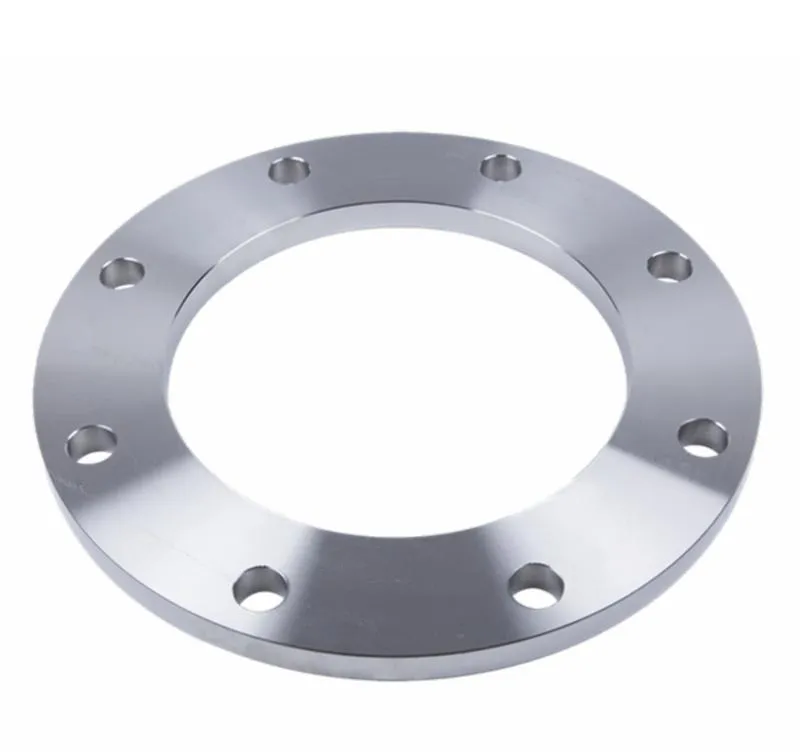-
Cangzhou Yulong Steel Co., Ltd.
-
Phone:
+86 13303177267 -
Email:
admin@ylsteelfittings.com

Dec . 23, 2024 10:21 Back to list
Understanding BI Blind Flanges and Their Applications in Piping Systems
Understanding Blind Flanges Essential Components in Piping Systems
Blind flanges are integral components in piping systems, playing a crucial role in various industrial applications. These specialized components are designed to seal off the end of a piping system, providing a tight closure that prevents any leakage of fluids or gases. By examining their design, types, applications, and advantages, we can appreciate the significance of blind flanges in modern industries.
Design and Construction
A blind flange is essentially a solid disk that is bolted onto the end of a piping pipe. Unlike a regular flange, which has an opening in the center to connect two pipes, a blind flange is completely flat with no hole in the middle. This design allows it to effectively seal the end of the pipeline, making it impossible for the contained fluid or gas to escape.
Blind flanges come in various materials, including carbon steel, stainless steel, and alloy steel, to accommodate different operating environments and fluid types. The choice of material is essential, as it needs to withstand the specific pressure, temperature, and chemical conditions of the application.
Types of Blind Flanges
There are several types of blind flanges categorized based on design standards, such as ANSI (American National Standards Institute), ASME (American Society of Mechanical Engineers), and API (American Petroleum Institute). The most common types include
1. Raised Face Blind Flange This type features a raised surface around the bolt holes, providing a better seal under pressure.
2. Flat Face Blind Flange This has a flat surface, making it suitable for applications where the bolted surfaces need to align closely.
3. Ring Type Joint (RTJ) Blind Flange Designed for high-pressure applications, this type incorporates a groove that holds a ring gasket. This ensures a tight seal under extreme conditions.
4. Weld Neck Blind Flange Characterized by a long tapered neck, this type provides enhanced strength and is generally used in high-stress applications.
Applications
Blind flanges are widely used in various industries, including oil and gas, chemical, water treatment, and power generation. Some of the key applications include
bi blind flange

- Piping System Termination They are often utilized to close off the end of a pipeline, allowing for modifications or maintenance without the need for complete disassembly.
- Testing Purposes Blind flanges are ideal for pressure testing systems
. By sealing the ends of pipes, technicians can test for leaks effectively.- Valve Installation They can be used as placeholders when valves are not yet installed, ensuring fluid or gas does not escape while construction or maintenance is ongoing.
- Equipment Isolation In plants, blind flanges help isolate equipment for repair or maintenance without shutting down the entire system, enhancing operational efficiency.
Advantages of Blind Flanges
Using blind flanges in piping systems comes with its set of advantages
1. Leak Prevention Their solid design effectively contains fluids and gases, significantly reducing the risk of leaks and environmental contamination.
2. Versatility Blind flanges can be used in various applications and configurations, making them a versatile choice for a wide range of industries.
3. Cost-Effectiveness By enabling maintenance tasks without shutting down entire systems, blind flanges save time and reduce operational costs.
4. Ease of Installation Compared to other sealing methods, blind flanges are relatively easy to install and remove, simplifying the overall maintenance process.
Conclusion
In summary, blind flanges are vital components in piping systems, and their importance cannot be overstated. Understanding their design, types, applications, and advantages helps industries optimize their processes and maintain safety and efficiency standards. As industries continue to evolve, the role of blind flanges remains crucial in ensuring reliable and leak-free operations across a multitude of applications. Whether it's in oil and gas or manufacturing, blind flanges stand as a testament to engineering ingenuity in fluid handling systems.
Latest news
-
ANSI 150P SS304 SO FLANGE
NewsFeb.14,2025
-
ASTM A333GR6 STEEL PIPE
NewsJan.20,2025
-
ANSI B16.5 WELDING NECK FLANGE
NewsJan.15,2026
-
ANSI B16.5 SLIP-ON FLANGE
NewsApr.19,2024
-
DIN86044 PLATE FLANGE
NewsApr.19,2024
-
DIN2527 BLIND FLANGE
NewsApr.12,2024
-
JIS B2311 Butt-Welding Fittings LR/SR 45°/90° /180°Seamless/Weld
NewsApr.23,2024
-
DIN2605-2617 Butt-Welding Fittings LR/SR 45°/90°/180° Seamless/Weld
NewsApr.23,2024











